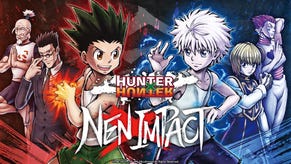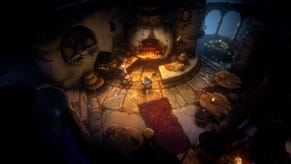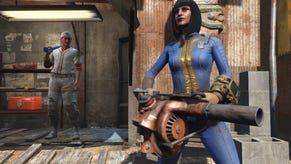Magnavox to Game Boy - the victors of the console wars, part one
Fanboy rage isn't new; the console wars have been raging for forty years. We look back over the history of the industry and ask: who won?
This is part one of a series, covering the earliest skirmishes; the later engagements will be covered later in the week.
First generation: early 1970's
Nintendo was already in the industry by 1977. The Color TV-Game series each supported just one game each, and ranged in price from the equivalent of about $100 to $550 in today's terms. The series was a major success in Japan with 3 million unit sales.
The first generation of home consoles kicked off in 1972 with the Magnvox Odyssey. This $100 beast was breathtakingly expensive, the equivalent of over $500 today, but with a collection of games accessed by swappable cartridges, it was a mind-blowing bit of tech. It shifted over 300,000 units, and a series of single-game dedicated consoles followed.
The Odyssey was the last console to support multiple games for quite some time, and the next major console to follow it was Atari's Pong, a collaboration with Sears, which went for close to $100 and sold 150,000 units.
Coleco's Telstar was a major rival. At $50, it was significantly more affordable, which probably explains the million-plus sales it totted up - although the fact that it spawned a long list of different models, each boasting a slightly different collection of games (mostly variants of Pong) might have helped. It also benefited from a 1976 launch, years after Magnavox had helped built a market and appetite for video game consoles.
You may be surprised to learn that Nintendo was already in the industry by 1977. The Color TV-Game series each supported just one game each, and ranged in price from the equivalent of about $100 to $550 in today's terms. The series was a major success in Japan with 3 million unit sales.
First-generation consoles did not have microprocessors. Their graphics were extremely limited, with mostly monochrome, simple shapes only, and play confined to a field defined by one screen. Additionally, while some machines supported multiple games via swappable cartridges, none of these were true, readable media in the way we understand it today.
So who won? Well, that's debatable. The Color TV game had the highest unit sales but never made it outside Japan. The Coleco Telstar was the highest-selling western release. But the Magnavox Odyssey is the one that's stuck most firmly in memory. Draw.
Second generation: mid 1970's
Mattel's Intellivision is an interesting prospect. Made by a toy company, it ought to have been a nasty cash-grab affair, but was actually one of the higher quality consoles of the generation. The market reacted accordingly.
The second generation of video games consoles overlapped considerably with the first. The major differences were the addition of microprocessors - giving consoles a "brain" as it were - as well as multiple colours, sprite-based graphics and multiple play fields (although scrolling wasn't possible; fields flipped). The first 8-bit consoles to hit the market, second-generation video game consoles were the first to support multiple games via ROM cartridges.
Everyone wanted to jump on video games at this point, with the result that the market flooded with options and a baffling array of variants. We'll only look at a handful of main contenders.
The ColecoVision was a departure from the Telstar series Coleco had enjoyed success with during the past generation. Launching in 1982, this was the console you bought if you were serious about arcade games, as it was capable of impressively accurate recreations of the experience found on dedicated cabinets. Its cute twist controller took a backseat to its brilliant library of games; it came with Donkey Kong as a pack-in and boasted 145 cartridges. It racked up something over 2 million sales, despite a hefty $200 price point (over $480 in today's terms).
Mattel's Intellivision is an interesting prospect. Made by a toy company, it ought to have been a nasty cash-grab affair, but was actually one of the higher quality consoles of the generation. The market reacted accordingly, affording it over 3 million sales in response to the catalogue of 125 games, many of which are classics today. How high would that figure have climbed if the Intellivision didn't cost $299, which in 1979 was the equivalent of over $850? Holy moly.
Magnavox Odyssey² launched in 1979 as the first major console successor to hit the market. It built strongly on the original Odyssey's strengths, but it didn't have the graphics grunt to compete with contemporary releases. It was another astoundingly expensive offering at $200, which would be more than $720 today.
Atari actually released two widely-recognised consoles during this generation. The Atari 2600 hit the market in 1977 for $100 (again, over $770 in today's terms) and went absolutely gangbusters, racking up tens of millions of sales. Its influence on the future of video games cannot be over-estimated - and not for entirely positive reasons.
So who won? There's not really any argument here. The Atari 2600 sold so powerfully that for a while the word "Atari" was used generically to mean any video game or console. It also wins the wooden spoon award, though, for crashing the entire industry. Read on for more on that.
Bonus round: the crash
Having arrived as a pastime with mainstream recognition and serious selling power, video games underwent a tremendous crash, becoming virtually worthless almost over night. The problems began in the late 1970's when less popular consoles were sold off at at a loss, bombing the North American market.
The industry struggled on, revitalised by the overlapping second generation of games, so that by 1980 things were back on track, and Atari in particular was absolutely minting it despite the Atari 2600's inferior specs. Sadly, Atari's tendency to throw enormous marketing resources at inferior products - the appallingly cheap and nasty E.T. is the famous example - absolutely destroyed consumer confidence. By 1983, the bubble had burst spectacularly. Only Intellivision survived in the west.
On the next page: The third and fourth generations, plus accompanying handhelds.
Third generation: early 1980's
The third generation is often thought of as a war between Sega and Nintendo, but Atari made another attempt, too.
The crash was so dramatic in North America that it's amazing the market ever bounced back. Happily, Nintendo's first generation Color TV-Game had kept the dream alive beyond the West. Third-generation consoles built on the sprite-based success of the past generation with multi-directional scrolling playfields, tiled backgrounds, improved graphics and audio and D-pad controllers.
The first major console of this generation was the NES, which Nintendo first convinced western distributors on by positioning as a computer, with a keyboard and everything. It later chucked the peripheral, but the name - "Nintendo Entertainment System" - is likely a leftover of this approach (and is echoed by Microsoft today, interestingly). Released in Japan in 1983 and jumping the pond in 1986, the NES was phenomenally successful, and likely single-handedly responsible for reigniting the games industry. It sold over 61 million units worldwide and introduced brands like Mario, Final Fantasy, The Legend of Zelda - and hundreds more.
Sega's Master System was its main competitor, although the then Arcade-focused Sega kicked off the third generation with the oft-forgotten SG-1000 in 1983. Mostly restricted to Japan, this console wasn't much chop on its own, but it did give the company the impetus it needed to come back stronger. The Master System, on the other hand, went through several hardware variants and sold about 13 million units. It also had a huge catalogue of classic properties, such as Wonder Boy, Alex Kidd and Phantasy Star.
The third generation is often thought of as a war between Sega and Nintendo, but Atari made another attempt, too. The Atari 7800 released in 1986 and was positioned as the most authentic arcade experience you could have at home. unfortunately, gamers were already moving towards the more substantial experiences offered by home consoles, so the poor old 7800 didn't have much luck, despite nabbing several Nintendo properties through a legal loophole. It only sold about 3.7 million units.
So who won? Nintendo came out triumphant, hands down. The NES was a major success both in its own right and in resurrecting flagging western interest in a devestated industry.
Fourth generation: late 1980's
The SNES didn't reach the west till 1991. This delay did absolutely nothing to stop Nintendo's rocketing success.
The fourth generation was the height of the Sega versus Nintendo war, and has been explored in great detail. Often called the 16-bit generation, the fourth generation was a significant step up in power from the last, and supported parallax and multi-layer scrolling, on-the-fly sprite scaling, much improved graphics and audio, and controllers bristling with buttons.
Of these two major contenders, Sega was the first to market with the Mega Drive (or Genesis, if you must) reaching the west in 1989. With an estimated 40 million sales and a catalogue of exclusives like Sonic and Streets of Rage, as well as arguably superior versions of widely-ported titles like Disney's Aladdin, it was marketed as "cooler" than Nintendo's offerings, and capitalised on its head start. Towards the end of its lifetime Sega went a bit mad with bizarre peripherals, none of which were particularly successful.
The SNES, on the other hand, didn't reach the west till 1991. This delay did absolutely nothing to stop Nintendo's rocketing success; the SNES sold over 49 million units, produced some of the best graphics a 16-bit machine has ever managed, and is host to a whole slew of classic games. When gamers of a particular age think Final Fantasy, Metroid, and Castlevania - among dozens of others - it's the SNES they're thinking of.
There were a few other bits of hardware floating around at this time, notably the outrageously expensive but arcade dream Neo Geo, but the one we must give a little nod to is the TurboGrafx-16 PC Engine. It only had an 8-bit processor initially, and was launched ahead of the Mega Drive to compete with the NES, but came just a little too late, falling victim to comparisons to Sega and Nintendo's 16-bit machines. Like the later PlayStation it began life as a rejected Nintendo peripheral, but diversified into a huge range of different models and accessories that casual consumers couldn't keep track of. This PC-like aspect differentiated the TurboGrafx-16 from its console brethren, which hardcore gamers liked, but the mainstream market didn't appreciate as strongly. It sold 10 million units.
So who won? On unit sales, the SNES pulled ahead, and Nintendo's decision to squeeze the last drops out of the console rather than leap straight into the next generation paved the way for its continued success in later years. But Sega was definitely a serious contender, and we can call this whole generation a win for gamers in general.
Handhelds
Atari made one last jab at the console market in the fourth generation with the Lynx. Although it launched well it pretty much crashed and burned.
Before we move on to the fifth generation, let's take a moment to examine handhelds released over the first four cycles. Handhelds don't always track generations closely, differing widely in timing and power from their home console brethren, but the majority of successful handhelds over the period covered above are classified as fourth generation.
After efforts like Nintendo's Game & Watch series, the remote-like Microvision, and the precocious Epoch Game Pocket Computer, handhelds went into a bit of a lull until the Game Boy turned up in 1989 and single-handedly established the market for portables. With over 118 million units sold across its various hardware iterations, hit after hit including portable-exclusive titles like Tetris and Pokémon, it enjoyed a ludicrously long lifespan.
Atari made one last jab at the console market in the fourth generation with the Lynx, which also launched in 1989, although several months later. It had a full colour screen and impressively advanced graphics tech that weren't entirely equalled until the SNES launched, and supported up to 18 players via cable links (oh my gosh that explains the name). Sadly, and $100 more expensive than the Game Boy, although it launched well it pretty much crashed and burned. Nobody's ever really nailed down how many units it sold, but estimates put it around the 1 million mark. Ouch.
Similar problems plagued Sega's Game Gear, which also suffered from short battery life. It had some great features, like an optional Master System adapter making many favourite games playable everywhere, and in the finest Sega traditions had a weird peripheral - a TV tuner. Its game library was pretty hit and miss, unfortunately, and it was so big Nintendo kids would laugh uproariously when you tried to discuss the full colour, landscape screen.
So who won? Are you kidding? The Game Boy, of course. Its legacy lives on to this day.
Tune in later this week for part two: the 32-bit world and beyond. [image credits: 1, 2, 3, 4]








.png?width=291&height=164&fit=crop&quality=80&format=jpg&auto=webp)






